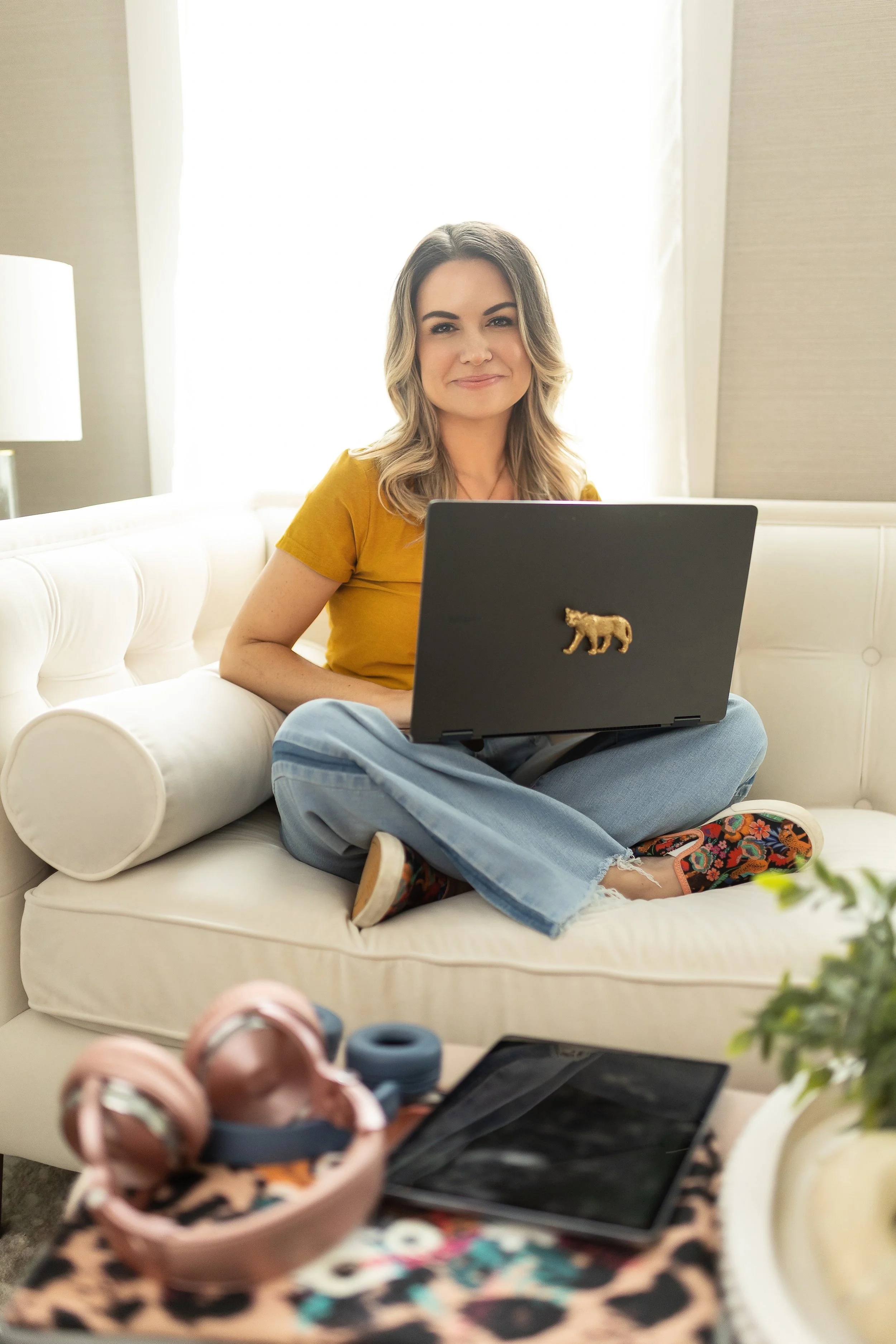As AI Tools Flood the Design Industry, Who Are They Really Being Built for and What Should Designers be Wary Of?
Questioning the Role of AI in Shaping the Future of Interior Design
A conversation between Jenna Gaidusek, Founder of AI for Interior Designers™, and Julia Reinert, Founder of The Lifestyle Historian™
With the rapid rise of AI in every corner of the creative world, many designers are asking: is this new wave of tech empowering the profession or quietly replacing it?
In Episode 43 of the AI for Interior Designers™ podcast, Jenna Gaidusek flips the usual AI conversation on its head. Instead of focusing on what AI can do, she dives into what it can’t, and more importantly, what it shouldn’t. She challenges us to rethink who these tools are really being built for and what that means for the future of interior design.
Jenna:
We hear so much about how AI is transforming design, and yes, it’s exciting. But we have to step back and ask: Who is this actually being built for? Because right now, a lot of these tools are targeting consumers, not professionals. They’re flashy, they look impressive, but they often bypass the people who do this work for a living.
That’s where I keep saying: Be careful what you ask for. These companies don’t care about preserving the value of your creativity. They care about building scalable tools that sell. And if that means pushing designers out of the process to make something more “accessible” or “automated,” they will.
Julia:
I’m not going to lie. This episode made my heart beat a little faster and not in a good way. There’s this illusion that AI is leveling the playing field, but in reality, it’s often removing the player altogether which is completely counterproductive to the benefits of AI-more output in less time to lighten our loads and broaden our awareness. And let’s remember that it is not AI itself that is the problem but rather the developers and the companies who are leveraging capabilities of AI for their own gain.
What also stood out to me was how many people don’t fully understand the limitations of AI in this space. They assume it can design a room from start to finish. But as you said, AI doesn’t actually grasp spatial planning or scale. It can’t truly understand how people live and move in a space. We cannot stick our heads in the sand on this. AI is not going anywhere but up. However, human interaction, emotional intelligence, and real world experience are essential to the success of our projects and our industry.
Jenna:
Exactly. AI might be able to generate a beautiful image, but there’s such a disconnect between what looks good in 2D and what works in real life. Right now, AI can’t capture nuance, emotion, or real functionality. It can’t understand your style or your client’s.
It can take a single image and build a 3D model, and that’s huge. That’s the kind of tech that can really support us. But we need more tools like that-ones that cut down on the tedious work, not the creative work-built specifically for designers and manufacturers. We should be building toward systems that help professionals, not ones that hand power to consumers and retailers while pushing designers aside.
Julia:
And that brings up something you mentioned toward the end-how designers can protect themselves. Because this shift is already happening. We’ve seen AI scraping artwork and design work from the internet and repurposing it. There are real concerns around intellectual property.
Jenna:
There are, and unfortunately, there aren’t clear answers yet. Designers are vulnerable right now. Your work, your drawings, your ideas-they’re online, and that makes them accessible in ways we never had to think about before. And once something is used to train a model, it's nearly impossible to trace or control where it ends up.
I think the real question behind this episode isn’t “what can AI do for us?” It’s “How do we brace for what’s coming?” The technology is evolving fast, and it’s not going to slow down so the best thing we can do is stay informed, stay connected, and advocate for tools that elevate our work…not erase it.
Julia:
Yes. And for designers who tuned into this podcast episode who feel overwhelmed or even a little defeated by this, there is still so much reason to stay engaged. I want to reiterate Jenna’s point that there will always be clients who want to work with real people. Clients who value the experience and vision that only a human designer can bring.
It’s just like you said Jenna: the point isn’t to reject AI outright. It’s to be intentional. To ask the hard questions now, before the decisions are made for us.
Final Thoughts (from both of us):
AI is not inherently good or bad but it is powerful. And like any powerful tool, how it’s used (and who it’s used for) matters.
If you’re a designer, this is your moment to stay alert, stay adaptable, and stay vocal. Use the tools that support your process, protect your work wherever you can, and never forget: you are the differentiator. AI can’t replicate the human heart behind great design.
Expert Resources and Next Steps
The DAIly Training Program - Comprehensive AI implementation for design professionals
AI for Interior Designers Podcast - Weekly insights and tool reviews
AI Interior Design Tools: Game-Changing Technology for Creative Professionals





